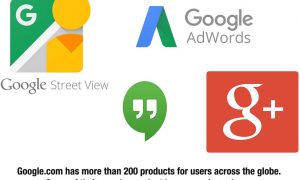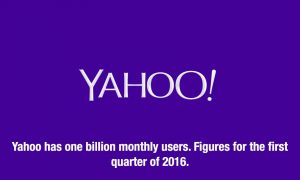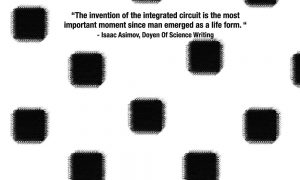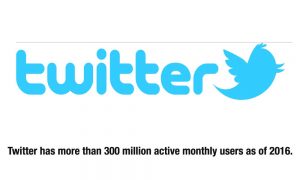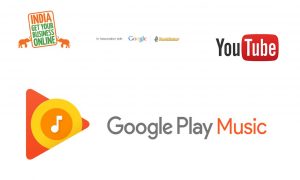We need to review the features of HTML5 in some detail, as it would be a major innovation for Internet operations in future. When Tim Berners-Lee envisaged a giant web of interlinked documents in the late 1980s, he created a computer language to connect them. Accordingly, he developed a code known as Hyper Text Markup Language (HTML). It instructed a browser what to do when it was presented a page. It was open software which made the Web a common platform for the world. In fact, HTML is described as the basic dictionary used by almost every Web page. But it was rather slow and did not support video natively, that is without plug-ins that have to be downloaded such as those provided by Macromedia’s Flash and later Adobe Flash for graphics and animation. As the speed of modems increased, and broadband links were provided, a better method of encoding multimedia content was required.
In the 2000’s it was not enough for the Web to show only text and images. The Web was required to handle video and multimedia functions for which it was not originally designed. Web site developers added proprietary programmes to play video or animations (for example, Flash or Microsoft’s Silverlight). This slowed down websites and proved inadequate in mobile devices.
Tim Berners-Lee wondered if HTML had outlived its purpose. The original HTML was standardized as HTML4 in 1997. WWW Consortium (W3C), headed by Tim, developed an alternative language called XHTML, but it did not work well. Further efforts led to the formation of HTML5, the fifth major version of the mark-up language for building Web pages. The main goal is to go beyond pages into programmes. This has emerged at a time when the global consumer Internet market is dominated by video viewing that has surpassed peer-to-peer file sharing. Traffic on the Internet has changed in terms of use. There is a growing demand for the Web browser to show video without additional software or plug-ins, such as Adobe’s Flash or Quick Time.
In April 2010, Apple’s Steve Jobs issued a public letter stating that with the development of HTML5, Adobe Flash would no longer be necessary to watch video or consume any king of Web content. His remarks stirred a hornet’s nest and propelled Web developers to start work on HTML5’s specifications without further delay. Adobe system has ended Flash Player plug-in for mobile services, as HTML 5 is universally adopted.
The increase of video inputs from social networks calls for superior technical support. The W3C does not back any particular video format. As a result, browsers such as Safari and Internet Explorer support a video standard called H264, used in Blue-ray disc players, whereas Firefox prefers an open source standard for a free video compression format. Google’s Chrome browser has adopted both. As a result a video on the Internet Explorer cannot play in Safari-based computers. Adobe systems’ Flash which supports most animations tries to unify all the websites and browsers but its weakness is essentially short battery life.
Though Flash was used in Apple’s Mac computers, Steve Jobs did not favour it in the iPod or iPhone. One reason could be that the adoption of Flash might have diverted income from Apple’s Apps, as Flash is proprietary. Moreover, today’s mobile chips cannot work with Flash. Hence an improved version of HTML was called for. HTML5 is therefore being adopted in mobile devices. HTML5 allows videos to be easily incorporated in web pages without additional software. It is an open standard and works on any device with a HTML5 compliant browser.
The International Telecommunications Union (ITU) announced in 2013 that its Members have agreed on a new compression format that would reduce the bandwidth requirements for video files. The new format (H265) needs only half the data needed by the previous format and thereby enable faster movie downloads.
HTML5 is still a working draft. Ratification is expected soon. W3C has announced 2014 as the target for HTML5 to be declared as a recommendation. This is expected to provide adequate time to evaluate the standard (Box 25). However, many companies have already adopted unofficial versions of the code.
HTML5: A Great User Experience
HTML5 can pull together data, photo, video and music in presenting an image. This would set a new record in creating personalized images o great beauty and appeal with emotional overtones. A document-sharing Website, Scribd.con use HTML5 instead of Flash and confirmed the superb quality of the new language.
HTML5 is not merely a new version of HTML. It has some 12 standards rolled into one. It gives priority to video, which can be streamed without a browser plug-in. It will also be useful in getting 3D images in online games as well as online versions of print publications.
Gone are the days when the mobile screen was a poor replica of the bright and colourful desktop version. The mobile browser is the open source system inserted in Apple’s Safari desktop browser, called WebKit. Google has also adopted it for its Chrome browser. The latest version of Microsoft’s Windows Os is designed to feature applications built in HTML5.
With HTML5, browsers will become faster and more efficient than before. The Web could become stronger too, as it could store more capacity. One recommendation is five megabytes of data can be stored per Web domain, which is 1000 times the current capacity. Web pages should change in real time in response to instant status updates from social networking sites. Real time traffic is made possible by an application programming interface (API), through a feature called Web Sockets.
The ubiquity of the Web offers immense opportunities to reach a worldwide audience. HTML5 would make it easier for entrepreneurs to commercialise innovative Web services. HTML5-enable browsers are designed for greater tolerance of errors, so that older Websites with some improper codes will also work well.
Mozilla’s latest version of its Firefox browser promotes fully interactive capabilities with HTML5. Millions of developers showcase their work without the need for external plug-ins like Adobe Flash. The new browser was downloaded nearly three million times within hours after its release online.
In early 2013, Mozilla came out with the first commercial build of its Firfox OS open mobile system. It is pointed out that Firefox OS smartphones will be the first built entirely to open Web standards, where every feature will be developed as an HTML5 application. Consumers will have easy access to everything they have on the Web including Facebook and Twitter. Firefox, it is claimed, brings the freedom and innovation of the open Web to mobile users worldwide and can cater to the next two billion people online.
Microsoft’s Internet Explorer (2011), Apple’s Safari and Google’s Gmail and Chrome—all support HTML5.they send a powerful message: do not underestimate the Web! More and more Web applications can be written with a browser using HTML5. In fact, with HTML5, browsers get updated frequently unlike the situation a decade ago when Chrome, Firefox and Safari did not exist.
HTML5 is able to provide certain services based on the web, which were available only as proprietary app in certain devices. For instance, Financial Times gave up the iPad application following HTML5 web page. In fact, many famous brands do not wish to be confined to some other app, which would gain in terms of profit and popularity.
Flash may still be found useful to get to web browsers 3D immersive gaming as in Xbox or Sony’s PlayStation.
With HTML5, developers could create advanced graphics, typography and animation without complicated computer code. HTML5 cannot by itself provide for animation within Web pages, which needed Java script. Voice recognition facility and access to Web pages while being offline are some of the additional features. In sum, HTML5 would restore the Web as the main platform for a variety of services. Given the importance of software, its development is linked to the Web browser. The Web has spread to numerable areas like sharing music and photos, to banking and politics. Though the Web was not designed to be a software platform, it has become important for developing various types of software.
Mikkonen and Taivalsaari expect a ‘major battle’ between proprietary native applications and the open Web. They are of the view that the Web APP will be more powerful especially after HTML5, which can be easily installed without any trouble to users. The use of Web applications has several advantages or tablets. Apple and Android take a cut of 30per cent of each sale through them. This is not so with the Web. And data that can be stored in an app is reasonably kept at a high of 50MB. If the native apps are compared to a walled garden, then the Web-based apps can be described as a wide open field. The Internet, built on openness and free content, is designed to offer a wide range of Web-based apps, instead of readymade native apps store. However, the excellent quality of native apps is a hard goal to meet






